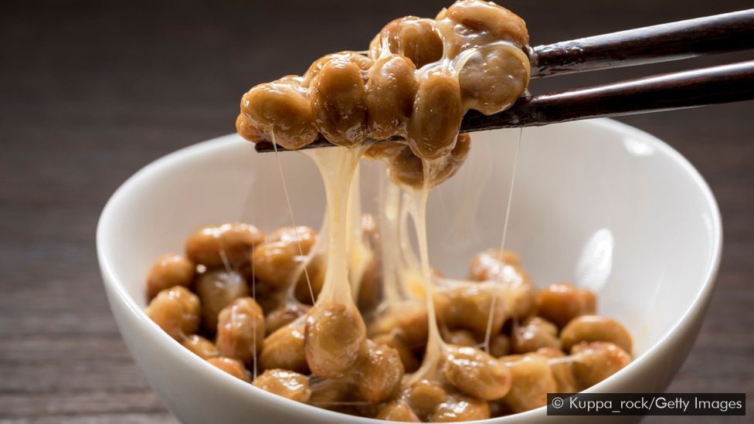The Japanese have long hailed natto as a superfood – but its ammonia-like smell and mucus-like consistency make the fermented soybean dish a turnoff for many.
Every day without fail, my 65-year-old mother prepares a dish that many people would say looks, smells and tastes revolting.
Nattō is a traditional Japanese food made from fermented soybeans.
It has an ammonia-like smell and mucus-like consistency that makes it polarizing, even among people who grow up with it.
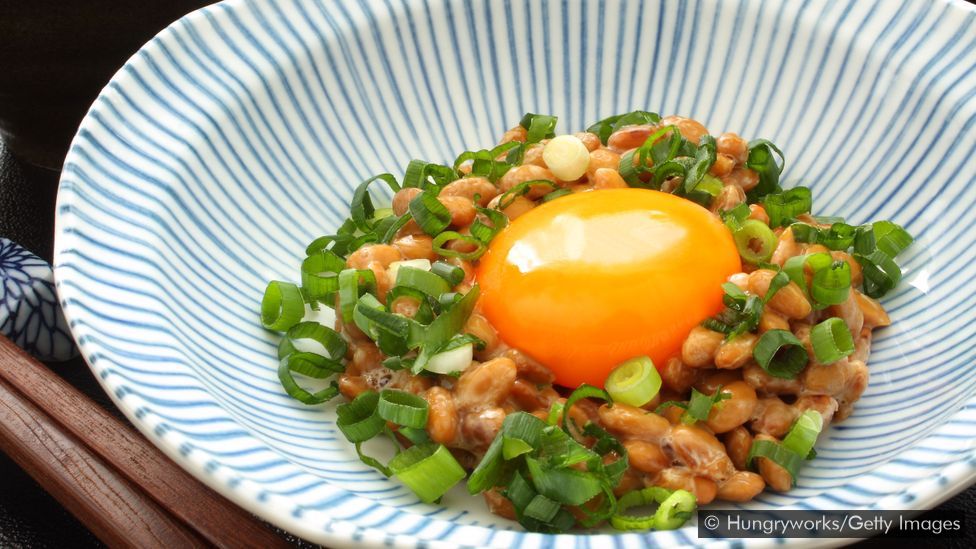
A 2017 survey by Nifty, a Japanese internet service provider, found that only about 62% of Japanese people actually enjoy nattō.
It also revealed that 13% actively dislike the taste. Regardless, many eat it anyway because of the health benefits.
“Nattō is very stinky. You definitely notice the smell,” said Yuki Gomi, a Japanese chef who runs the cooking school Yuki’s Kitchen in London.
“But I always have it in my fridge.” She says it’s a staple in her home, the same way that cheese and yoghurt is readily available in many Western households.

The Japanese have long hailed nattō as a superfood and believe that consumption is linked to improved blood flow and reduced risk of stroke – factors that are particularly appealing in a country that is home to one of the world’s oldest populations.
My mother often boasts that nattō keeps her blood “sara sara” (silky). Japanese news site SoraNews24 has gone as far as to declare that "a pack of natto a day keeps the death away”.
Hitoshi Shirakawa, professor of nutrition and food science at Tohoku University's Graduate School of Agricultural Science in Sendai, muses this is “probably true”.
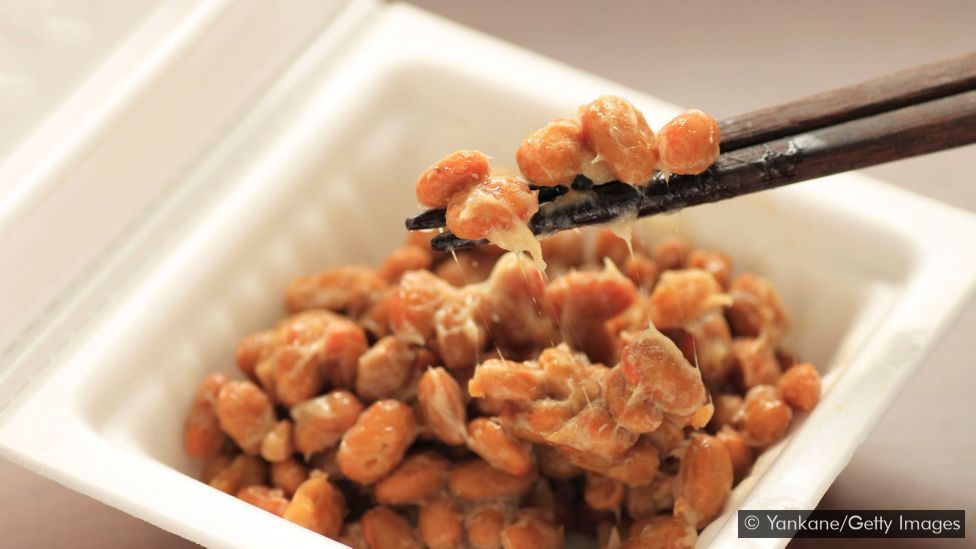
He cites a long-term study published in the British Medical Journal earlier this year: researchers at the National Cancer Center in Tokyo found that men and women who ate fermented soy-based foods like nattō on a daily basis reduced their risk of dying from a stroke or heart attack by 10%.
“Fermented soybean foods are less likely to lose [nutritional] components during processing, which is considered to be one of the reasons for the clear association between nattō consumption and [a reduced] risk of cardiovascular diseases,” Shirakawa said.

Those nutritional components include plenty of protein, iron and dietary fibre, which have positive effects on blood pressure and weight.
Nattō might even help people feel and look younger. One serving (roughly 40-50g) has the same levels of vitamin K as the daily requirement set by the Japanese government and may help prevent osteoporosis.
Nattō is also packed with vitamin B6 and vitamin E, which Shirakawa says boosts cell turnover and slows skin aging.
But fermented soybeans were an integral part of the Japanese diet long before its nutritional benefits were understood.
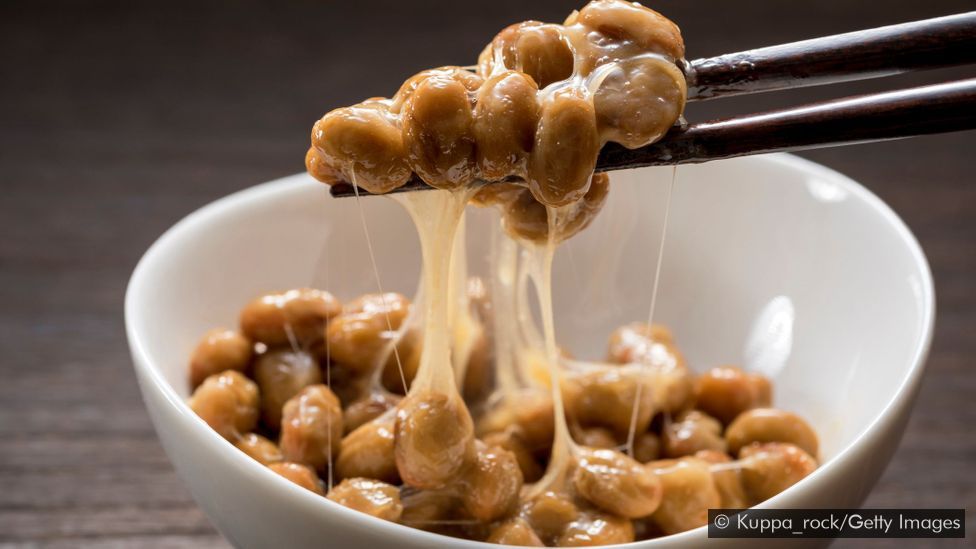
Dr Samuel Yamashita, professor of Japanese history at Pomona College in Claremont, California, says the food was first introduced to Japan from China during the Nara period (710-784AD).
“The historical record in Japan suggests that although nattō was introduced in the 700s, it became popular among both aristocrats and warriors in the Kamakura period (1192-1333) and became important, together with tofu, in the Buddhist-inspired vegetarian cuisine that emerged in the succeeding Muromachi period (1338-1573),” he said.
Yamashita says nattō evolved into a staple in the Japanese diet by the Edo period (1603-1867), when it appeared in cookbooks and started being prepared in the home.
Soybeans were soaked in water, boiled or steamed, then blended with the bacterium Bacillus subtilis.
They were then wrapped in straw and left to ferment for about a day, depending on the season and temperature.
Today nattō involves far less preparation and is available in convenience stores and supermarkets throughout Japan.
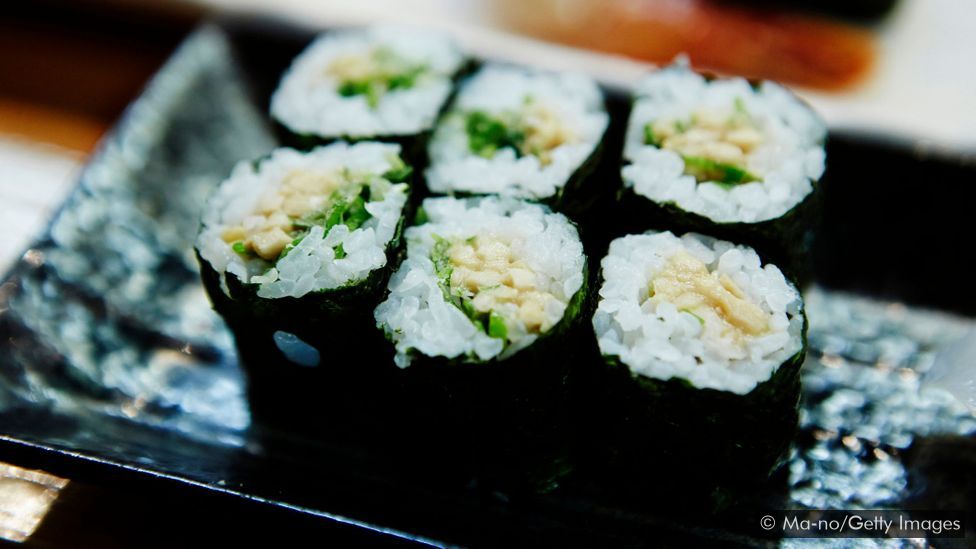
A set of nattō, typically containing three small polystyrene foam containers, costs about 100 to 300 yen (£0.75 to £2.25).
Each container has a single serving of nattō and tiny packets of tare (a soy sauce blend) and karashi (hot mustard).
To prepare nattō, you simply stir the three items and then pour the sticky concoction over a bowl of steamed white rice.
Other ingredients commonly used to spruce up the dish are chopped negi (spring onions) and raw egg.
When you lift your chopsticks to eat the end result, each bite is trailed by sticky strings.

In Japan, it’s most common to eat nattō for breakfast. My mother isn’t particularly fond of the taste, but consumes a bowl each morning, solely for its nutritional benefits.
Akemi Fukuta, a jewellery salesperson in Tokyo’s Ginza district, says she eats it several times a week because she finds it both healthy and delicious.
Gomi likes to make nattō for her four-year-old daughter’s dinner and says it’s a godsend for busy mothers.
Some people, like Mayuko Suzuki, have an entirely different level of appreciation for the simple dish.
She eats nattō two to three times a day and has made a career out of being a “nattō influencer”.
Known on YouTube and Instagram as Nattō Musume (Nattō Girl), Suzuki promotes restaurants serving unusual nattō-inspired dishes and shares her own recipes containing the slimy soybeans.
She regularly shares photos of dubious combinations like nattō pasta, nattō pizza and even nattō gelato.
“I like the unique taste that the fermentation brings,” she explained. “When you add nattō to your recipes, it manages to add both rich and mellow notes to the food.”
Given her enthusiasm, it’s no surprise that Suzuki has made three visits to Sendai-ya, an all-you-can-eat nattō restaurant in Tokyo.
For about 900 yen (£6.75), customers can devour several variations on the dish, including edamame nattō, goma (sesame) nattō and wakame (seaweed) nattō.
The business also sells an unlikely dessert: nattō doughnuts.
Sendai-ya president Itō Hidefumi is the third generation of his family to take over the business, which was established in the Yamanashi prefecture in 1961.
He says Sendai-ya expanded to Japan’s capital as a response to customer demand.
There are also several vending machines containing Sendai-ya’s nattō products in the city.
"It’s very rewarding to take over a family business that provides people with such a healthy product,” he said.
Despite its reputation as a superfood, however, nattō has failed to gain popularity outside of Japan.
It has, however, attracted enough attention to end up in the Disgusting Food Museum in Malmö, Sweden.
“The two things that most people find problematic with nattō are the sliminess and the smell,” said museum director Andreas Ahrens.
“It does contain bacteria that’s also found in dirt, so it has that earthy kind of smell to it.”
The Disgusting Food Museum features nattō alongside dishes like cuy (roasted guinea pigs from Peru) and casu marzu (maggot-infested cheese from Sardinia).
The exhibit also includes American snacks like Pop-Tarts and Twinkies.
“What we find disgusting and delicious is very cultural,” Ahrens said. “It all depends on what we grew up with and what we are conditioned to like. Something like nattō is a very good example of that.”
Gomi understands that sentiment all too well. She remembers being hesitant to include a recipe for nattō maki (sushi rolls) in her 2013 book Sushi at Home:
The Beginner’s Guide to Perfect, Simple Sushi. “I was scared that people wouldn’t like such stinky stuff. I was almost embarrassed,” she admitted.
But Gomi says that she’s since seen an uptick in students who come to her cooking classes and want to know more about nattō.
“More people are traveling to Japan and staying in ryokan (traditional Japanese inns) that serve nattō for breakfast,” she said. “They come back and tell me they had some strange, sticky stuff… some of them hate it.
I don’t blame them. But some of them say they quite like it and want to know where they can buy it.”
Gomi says it makes her hopeful that her non-Japanese peers will come to appreciate nattō as much as she does.
“I'd love to see it more widely available in places like a farmer's market,” she said. “There is certainly a trend towards fermented food [and drink], such as kimchi, kefir and kombucha.
It feels like nattō’s time is just around the corner.”
Latest Stories
-
Ghanaian athletes in Côte D’voire for U-20 Championship
1 min -
Made in Taadi must happen this year by hook or crook – Kofi Kinaata
15 mins -
Labour unions contemplate May 2 strike over unpaid Tier-2 pension dues
17 mins -
Sedina Tamakloe’s arrest: MoF, MASLOC board can’t be left off the hook – Analyst
31 mins -
Three JHS boys arrested for allegedly gang-defiling 15-year-old colleague
37 mins -
Today’s front pages: Friday, April 19, 2024
47 mins -
Magnus RexDanquah : ‘Breaking the Eight’ – The Greatest Scam Ever since Ackah Blay Miezah’s Gold Deposits claim
55 mins -
You cannot advise a fool – Kofi Kinaata
2 hours -
9-month-old baby dead after father bathed her and mother in acid
4 hours -
Christopher Adu Boahen to be buried on April 25
4 hours -
Ghana will achieve universal access to electricity by end of the year – Finance Minister
4 hours -
Ghana is set to procure one million revenue-efficient meters
4 hours -
National Peace Council raises concern over hate speech, insults in the media
4 hours -
I will fight corruption ruthlessly – Alan Kyerematen
4 hours -
Akufo-Addo pledges to prioritise the welfare of cocoa farmers
4 hours

